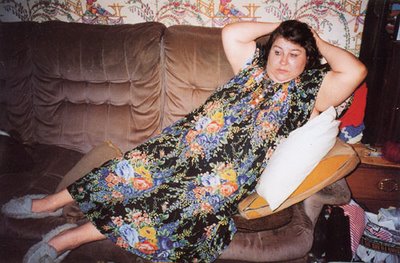
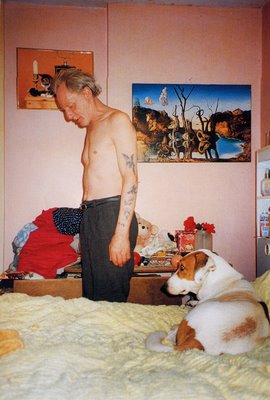
The Billingham family life unfolds before the lens, running the gamut of emotions from abject dejection to flurries of tenderness. There are idle moments, such as when a jigsaw puzzle is contentedly pieced together, or lying back on the sofa while the TV is on. Tiny kittens are lovingly fed milk through a little dropper, the obvious joy shining through in Liz's expression. There are minor accidents, such as trips and falls, or spillages: peas and carrots scatter across the kitchen floor before the half-bemused, half-opportunist gaze of the family dog. There is also confrontation, from glowering dagger-looks to blazing rows, with explosive situations where fists are threatened or the cat finds itself flung across the room. There is the muffled peace of a drunken haze, and unashamedly sweet moments of tender, familiar affection.
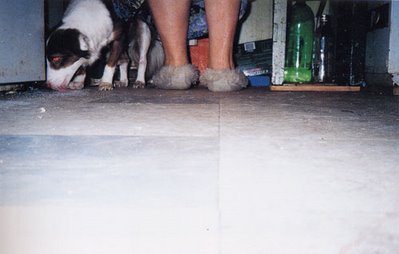
n 1996, a book of these family photographs, Ray's a Laugh, was published. Ray is the focus throughout the book. An alcoholic man who needs as much attention as a baby, his presence is constant, even when he is not in the frame. Ray drains the color out of the flat, seeming to live in a fog - gray jumpers, nicotine hair, brown liquid - oblivious of his surroundings. His wife Liz, however, injects color back into the home with her vibrant dresses and collections of porcelain knick-knacks. Liz is (obviously) the mother figure, mothering everyone from Ray to the pets.
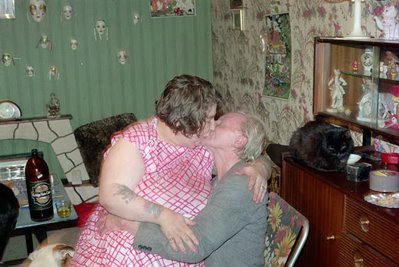

Upon publication, Ray's a Laugh - and the numerous European gallery exhibitions that sprang from it - caused a sensation. The subject matter and frank style of the works ensured an intrigued audience, but what really generated the buzz was the ambiguity of the images; the pictures left viewers to deal with their own reactions to the scenes, without the blatant lecturing normally received from images in the media. Generally in mass-media images, happy families are seen in spotlessly clean, well-ordered households. Not here. Equally, images of families living on the breadline in council estates usually present those people as demoralized victims living in a passive, defeated state of misery. Again, not here. Billingham's family images reveal the shallowness of most popular representations of the family, while emphasizing the complexity of family issues and social life, not to mention the difficult relation between the viewer and the viewed.
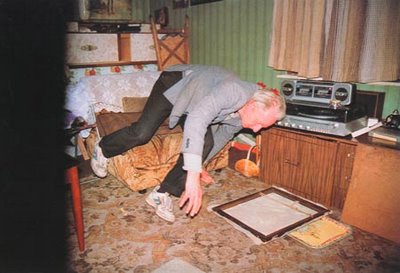
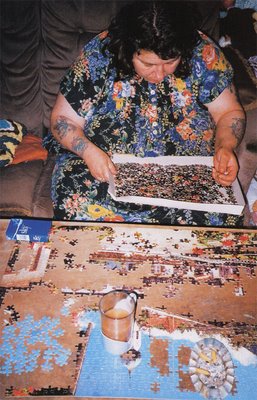

richard billingham :
'my father raymond is a chronic alcoholic.
he doesn't like going outside, my mother elizabeth hardly drinks,
but she does smoke a lot.
she likes pets and things that are decorative.
they married in 1970 and I was born soon after.
my younger brother jason was taken into care when he was 11,
but now he is back with ray and liz again.
recently he became a father.
'dad was some kind of mechanic, but he's always been an
alcoholic. it has just got worse over the years.
he gets drunk on cheap cider at the off license.
he drinks a lot at nights now and gets up late.
originally, our family lived in a terraced house,
but they blew all the redundancy money and, in desperation,
sold the house. then we moved to the council tower block,
where ray just sits in and drinks.
that's the thing about my dad, there's no subject he's interested
in, except drink.'
'it's not my intention to shock, to offend, sensationalise,
be political or whatever, only to make work that is as spiritually
meaningful as I can make it -
in all these photographs I never bothered with things like
the negatives. some of them got marked and scratched.
I just used the cheapest film and took them to be processed
at the cheapest place. I was just trying to make order out of chaos.'
Questions:
- Other than the obvious differences of the social class of the families depicted, how are Billingham's photographs different from Tina Barney's (see earlier post)?
- When Billingham writes "it's not my intention to shock, to offend, sensationalize," do you believe him?
- Quoting from the Cotton book- "The use of seemingly unskilled photography is an intentional device that signals the intimacy of the realtionship between the photographer and his or her subject." How can you relate this quote to Billingham's images?

3 comments:
Compared to Barney Belingham's approach is compleatly different. I don't beleive any of these are posed, maybe something like "mom put you hand behind your head". These have a gritty qualyity and look like they are shot with cheap cameras and film unlike Barney. As far as sensationalizing them, probibly not, not that it matters or that I care. I think Belingham grew up in this condition and he I'm sure is not shocked by it like the rest of the world would be. But I'm sure he does recognize that his family life effects people differently and enjoys that.
I do believe that Billingham did not mean to shock, offend, or sensationalize with his photos. I think when you come from an environment like that you learn to think about it objectively so as to separate yourself from whatever the tragedy is. So I feel as though his photos are plainly documentary in nature. As though he only means to show what is, and not add any commentary of his own.
The fact the he did live in these conditions does make is believable that he did not mean to shock, and that the snapshot quality of his work conveys the intimacy he shares with the subjects. The shots contract to barney's in that you can't set up these shots, like someone tripping or a cat flying across the frame.
Post a Comment